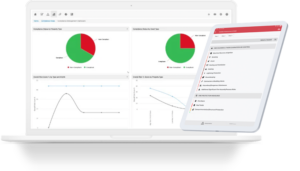28 May

5 Steps To All Risk Assessment Templates
A risk assessment template can assist you to keep a simple record of who might be harmed and how, what you’re already doing to control the risks, any further action required to take to control the risks, who needs to take action, and when that action is needed by.
Whether you are a small business or a global conglomerate, risks are very much part of the day-to-day. Whether you are in construction or selling hedge funds, there is no hiding from risk management or the risk management process.
Ensuring you, your colleagues, your contractors, and the public are safe is very important to the success of your business. As such, we have put together information relating to some critical areas that deserve standalone attention from a risk assessment perspective.
Remember the five critical steps to all risk assessment templates:
- Identify health risks
- Identify who may be harmed
- Identify the precautions needed to remove or mitigate the risks
- Record all findings and precautions and implement them
- Review and update risk assessments when required
COVID-19 Risk Assessment Template
As an employer, it is your duty to ensure that all employees or anyone that is in your premises is protected from harm. This includes taking reasonable steps to protect your workers and others from coronavirus. A COVID-19 risk assessment will help you manage risk and protect people. If you have less than five employees, you do not have to write anything down. However, it may help if you do.
Your COVID risk assessment should be updated regularly to reflect any changes in legislation or guidance that could impact how you conduct your work activity.
The Public Health England report Disparities in the risk and outcomes of COVID-19 findings include that some people may be at more risk than others of being infected; this should be considered in the risk assessment.
Some other practical measures you can add to your risk assessment template are as follows:
- social distancing measures
- staggered shifts
- additional handwashing facilities
Asbestos Risk Assessment Template
Asbestos is a naturally occurring fibrous material used for insulation and fireproofing purposes in buildings from the 1950s until the late 1990s. If disturbed, asbestos can release dangerous fibres, which can cause severe, even fatal, disease if breathed in.
The UK Asbestos Training Association (UKATA) states that asbestos is the UK’s biggest workplace killer claiming 5,000 deaths each year due to asbestos exposure. If you have identified asbestos in your working area or your work is likely to disturb or damage asbestos, then it is critical that a risk assessment is carried out.
It doesn’t matter who carries out the risk assessment per se; it matters that the person carrying out the risk assessment is knowledgeable and appropriately trained in the dangers and risk prevention methods of asbestos.
Examples of risk identifiers that should be added to your asbestos risk assessment template:
- What type of asbestos is present?
- How much asbestos present?
- What is the Asbestos Containing Materials (ACM) condition of, e.g., is there damage, what is the likelihood of it being disturbed, or will it remain intact?
- What is the friability of the ACM?
- What is the expected level of exposure?
Fire Risk Assessment Template
Currently, there are no statutory accreditation requirements for fire risk assessors. However, you should check that your risk assessor has the qualifications and experience relevant to the type of building being assessed.
You should always make sure that all previous fire risk assessment recommendations have been closed out and evidenced. Review your fire risk assessment at least once a year, or more if the risk demands it or if there are changes that may give reason to believe provisions are no longer adequate e.g. if there have been changes to the building, new cabling can create holes in walls allowing a fire to spread quicker.
Why is a Fire Risk Assessment necessary?
Here are some items you may consider adding to your fire risk assessment template:
- Evacuation strategy
- Stay-put, phased evacuation, simultaneous evacuation approach
- Key employees and a backup plan
- Evacuation backup plan
- Business interruption backup plan
- Fire action notices & evacuation plans up to date
- Does your visitor/contractor induction process work
- Are they getting the safety info required at sign-in?
- Alarms and call points are working and have been tested
- Relevant documentation
- Ventilation systems for removing smoke are working and have been tested
- Relevant documentation
- Emergency lighting in good condition, tested and working?
- Relevant documentation
- Fire doors in good condition, checked and self-closing?
- Relevant documentation
- Any battery backup units (for power outages) tested and working
- Relevant documentation
- Automatic fire protection system, tested and working
- Sprinkler systems, gaseous suppression systems
- Relevant documentation
Risk Assessments are not quick and easy; they are part of a long and challenging process to protect people and assets from the many possibilities of harm. All we can do is our utmost to ensure that the risks are as low as possible.
Find out how a risk assessment is done with examples.
Conclusion
We recommend going paperless and making your checklists, warranties, guarantees, and service records digital. Risk Warden’s document repository function is the perfect solution for your fire safety documents or any ancillary documentation related to any risk assessment template.
Move to digital, Risk Warden can help you assess and manage your risk without the complicated, lengthy process; let us do the work!
Start with our pre-set risk assessment templates today with a free Risk Warden account to experience just how easy it can be for yourself.


